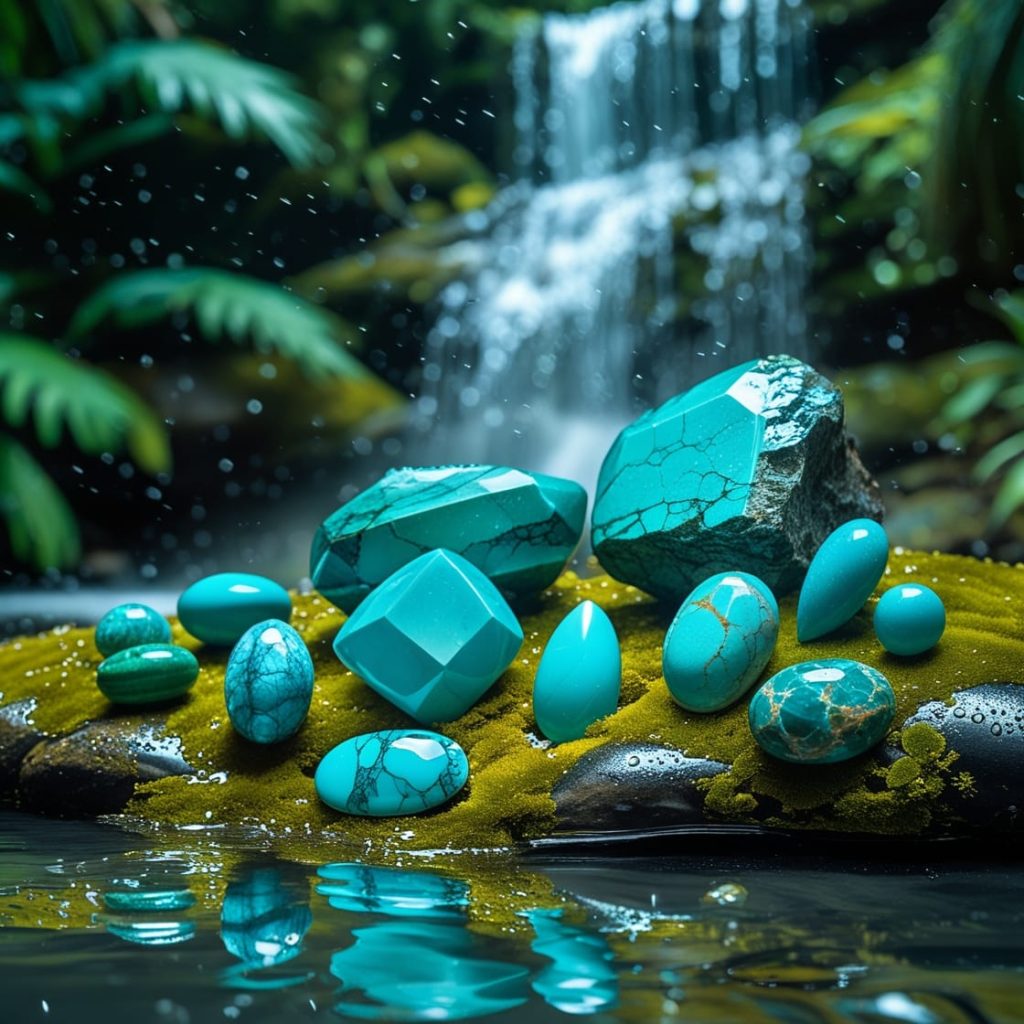Turquoise

Turquoise, an opaque blue-to-green mineral composed of hydrous phosphate of copper and aluminum, has been prized as a gemstone for millennia due to its unique hue. Formed in arid environments when mineral-rich water deposits copper and aluminum into rock fissures, its color ranges from a highly valued sky blue to various shades of green and even yellowish-gray, with the copper content determining its specific shade. Historically significant mining operations existed in the Sinai Peninsula before the 4th millennium BC, and the finest specimens have famously come from Neyshābūr, Iran, with the gem’s name likely derived from its trade route through Turkey. Typically cut en cabochon for jewelry, turquoise is appreciated for its waxy luster and is sometimes valued for its veining, or matrix, which proves its natural origin, though its color can be sensitive to sunlight, heat, and acids.
Agate
Agate is a diverse and beautiful variety of chalcedony, cherished for its unique banded patterns and inclusions which create distinct types like moss, lace, and fire agate. Among the most revered are Iranian agates, known as Aqiq, which are celebrated not only for their rich, earthy colors reminiscent of Persian sunsets but also for their profound cultural and spiritual significance. In Iran, agate is considered more than a gemstone; it’s a sacred talisman believed to provide courage and protection, often engraved with calligraphy and passed down through generations. This historical stone, once a prized commodity on the Silk Road, embodies the harmony between nature’s raw power and human artistry, serving as a poetic symbol of gentle strength and beauty born from pressure.

Turquoise
Turquoise, an opaque blue-to-green mineral composed of hydrous phosphate of copper and aluminum, has been prized as a gemstone for millennia due to its unique hue. Formed in arid environments when mineral-rich water deposits copper and aluminum into rock fissures, its color ranges from a highly valued sky blue to various shades of green and even yellowish-gray, with the copper content determining its specific shade. Historically significant mining operations existed in the Sinai Peninsula before the 4th millennium BC, and the finest specimens have famously come from Neyshābūr, Iran, with the gem’s name likely derived from its trade route through Turkey. Typically cut en cabochon for jewelry, turquoise is appreciated for its waxy luster and is sometimes valued for its veining, or matrix, which proves its natural origin, though its color can be sensitive to sunlight, heat, and acids.
Agate
Agate is a diverse and beautiful variety of chalcedony, cherished for its unique banded patterns and inclusions which create distinct types like moss, lace, and fire agate. Among the most revered are Iranian agates, known as Aqiq, which are celebrated not only for their rich, earthy colors reminiscent of Persian sunsets but also for their profound cultural and spiritual significance. In Iran, agate is considered more than a gemstone; it’s a sacred talisman believed to provide courage and protection, often engraved with calligraphy and passed down through generations. This historical stone, once a prized commodity on the Silk Road, embodies the harmony between nature’s raw power and human artistry, serving as a poetic symbol of gentle strength and beauty born from pressure.